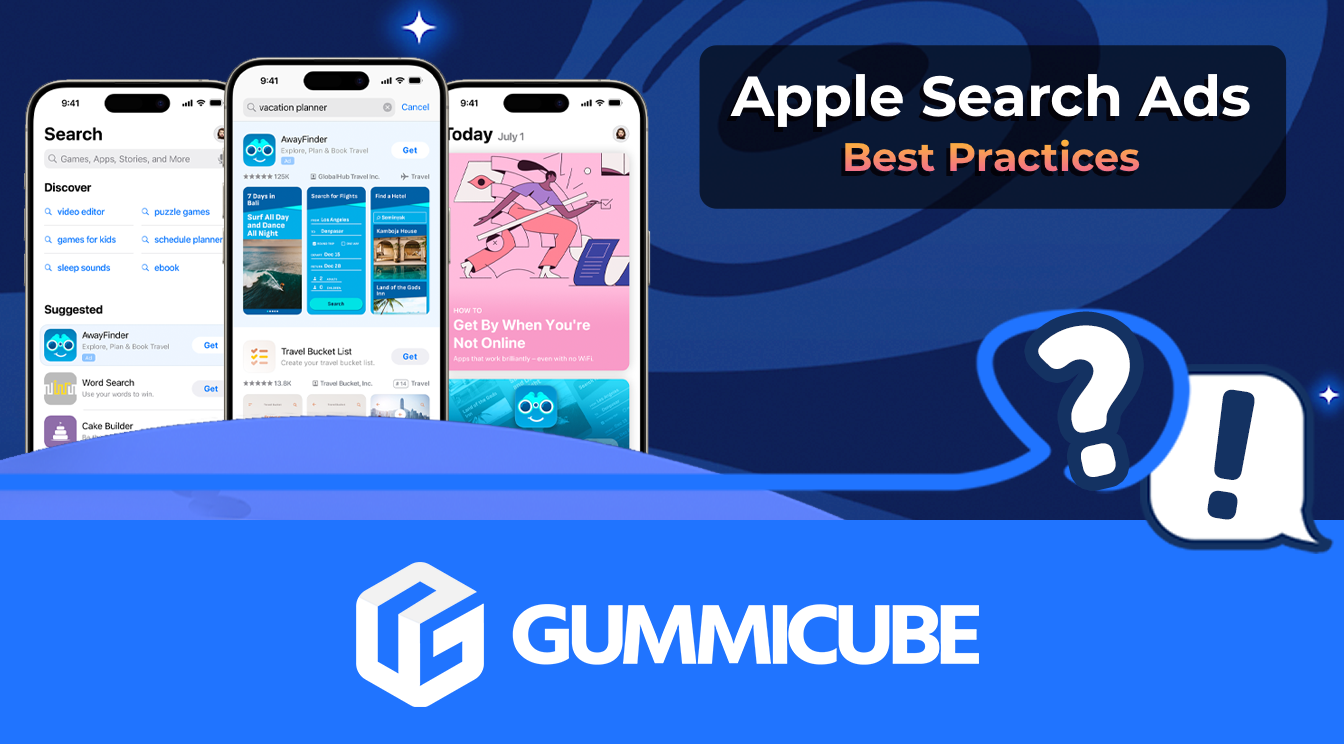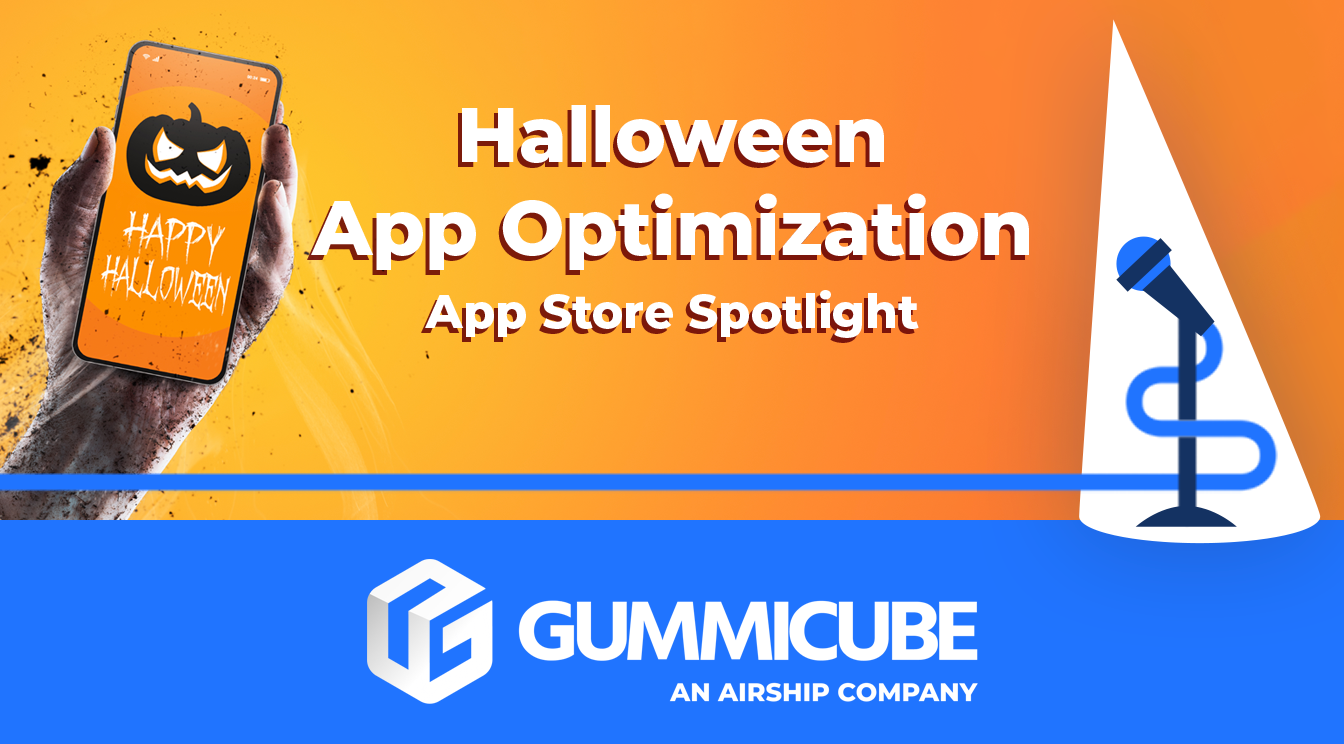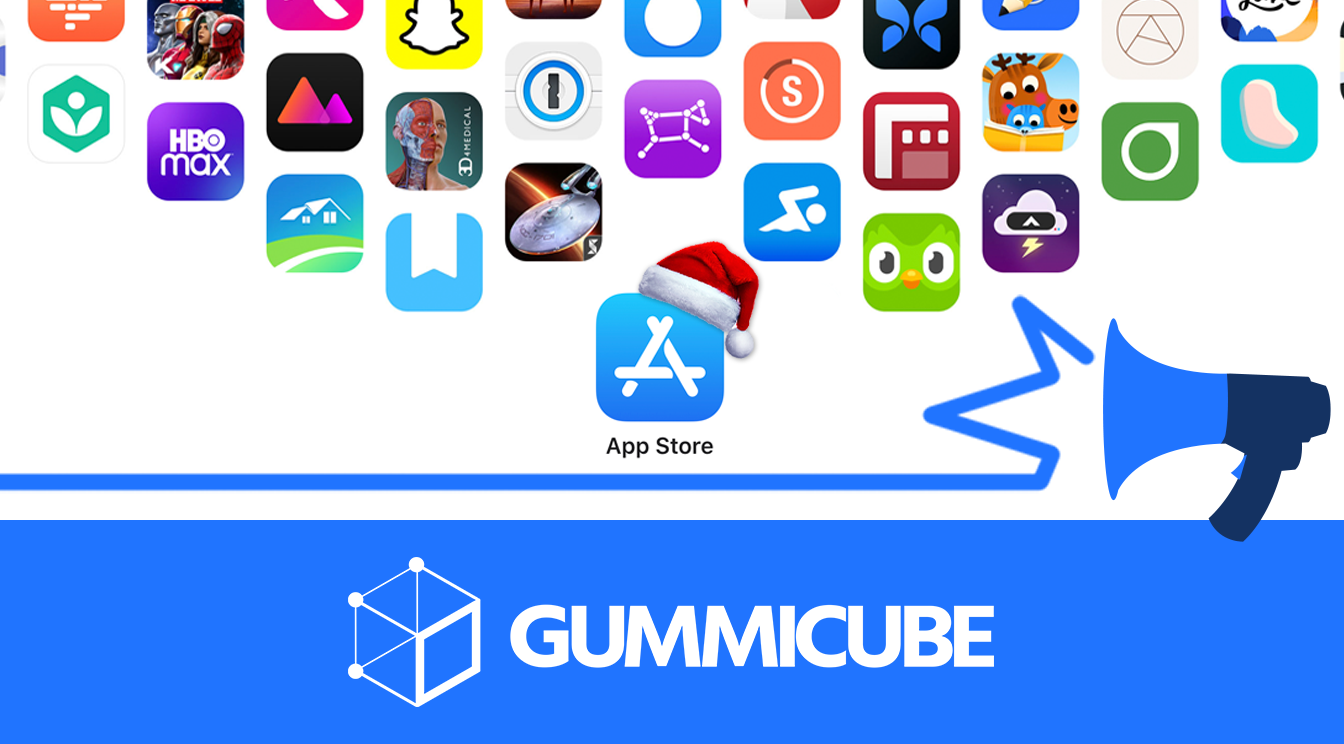
5 Best Practices for Apple Search Ads
Posted on July 3rd, 2024
Are you leveraging Apple Search Ads the right way? Take a look at these recommendations to optimize your paid campaigns and target the right users.

According to a recent report from comScore, the vast majority of app installs come via the app store, with search being the leading mobile app discovery method. Optimizing an app listing for the app stores continues to be one of app marketing’s highest ROI activities. What follows is 5 app store optimization tips. For more detailed information on the specifics of optimizing an app listing, check out our guides for Apple ASO and Google Play.
The way people search the app stores is different than how they search the web. Intent is different, what we are searching is different (applications vs literally anything on the web), and app store search results have trained us how to search. Using Google’s free web search suggestion tools provides a poor proxy for how potential users of your app are searching the app stores. For more on the differences between app store search and web search, check out our post containing examples from our app store intelligence tools.
Armed with app store data about how your target market is searching the app stores for apps like yours, the goal then is to cast a wide net at these keywords and phrases. The best way to achieve wide coverage is by building app titles, descriptions and using the keyword field (Apple only) to create a keyword matrix. This approach tends to “open up” keywords that would otherwise be too broad, vague or competitive to target. For example, “Free” may not be a good keyword to target on its own. “Free” and “Game” is still very vague. “Free”, “game”, “runner”, “zombie”? Where the keyword “free” didn’t make sense, combined with additional feature-based or descriptive keywords, “free” may be a valuable modifier. The above 4 keywords would result in coverage for:
For just those 4 words, there are 24 ways to arrange them into 4 word phrases, and more than 40 ways to arrange them in 1, 2, 3 and 4 word phrases. This starts to get complicated as Apple limits the characters in the keyword field, and has a somewhat subjective policy to keyword stuffing app titles (see below). Google limits the app name and the short description to 30 and 80 characters respectively. These constraints require marketers to make decisions on which individual keywords deliver the very best relevant phrase coverage. If the average length of an English word is 8 characters, we are trying to select the 15-20 keywords that provide the widest coverage of relevant searches. 15 targeted words can create a keyword matrix of almost 3,000 1,2 and 3 word phrases. As you can guess, advanced optimization software provides a solution to this challenge.
Visibility in app store search results is only part of the path to acquiring organic users in the app store. Once a potential user sees your app’s listing, the app title, icon and screenshots play a large role in converting a viewer into a user. An increase in conversion from 25% to 30% can mean thousands of new users in your app. Because the icon and screenshots make up the majority of an app’s store listing - investing in optimizing these creative elements has shown to have a large impact on app store conversions. Google not only sees creative testing as a tool for developers, but as a way to for developers to provide a better user experience to users. They recently announced support for live multi-variate testing in Google Play. Since traffic is live, and because Apple does not yet support testing in their app stores, testing bigger variations of your icon, screenshots and even the order of screenshots with a focus group is a recommended approach. Another key benefit to testing creatives with a focus group prior to making changes in the live app store listing is receiving qualitative feedback. More than just identifying a winner, this feedback can provide insights as to why a design performed better than another.
As with many closed systems, from Google’s web search algorithm to email spam filters to the app stores, where there is mystery - there is someone profiting from selling hacks. Some approaches to app store optimization are extremely short sighted, and many result in an app’s removal from the store or even developer account suspension. Check out our best practices and top ASO hacks to avoid here.
Google has virtually eliminated the abuse of keyword stuffing in app titles by limiting the app name in Google Play app listings to 30 characters. Apple, on the other hand, provides a whopping 255 characters for app titles! App publishers recognized there was no reason to sweat the selection of keywords used in the 100 character limit in the keywords field, as there were 255 characters to play with in the app title. Apple has since responded by rejecting apps who abuse this app title space, removing (key)words from the title and rejecting an app’s metadata and requiring a new app submission without the keyword-stuffed title. The market has caught on as well, where apps with keyword-stuffed titles perceived as low quality and spammy.
As mobile device usage continues to increase, with app usage growing even faster, implementing a process for ongoing app store optimization just gets more critical for companies invested in mobile as a channel, hub or resource for clients, partners and leads. Armed with these app store optimization tips, and with the right partner, marketers and published have a solid foundation for long term mobile app success.

Are you leveraging Apple Search Ads the right way? Take a look at these recommendations to optimize your paid campaigns and target the right users.

Ghostly happenings are among us... and in your app listing too? If you aren't leveraging the power of app seasonality to make relevant tweaks to your store listing you're leaving precious engagement and conversions on the table.

Developers on the iOS App Store should plan in advance of the upcoming Holiday Schedule to allow enough time for apps to get approved during the busy holidays.